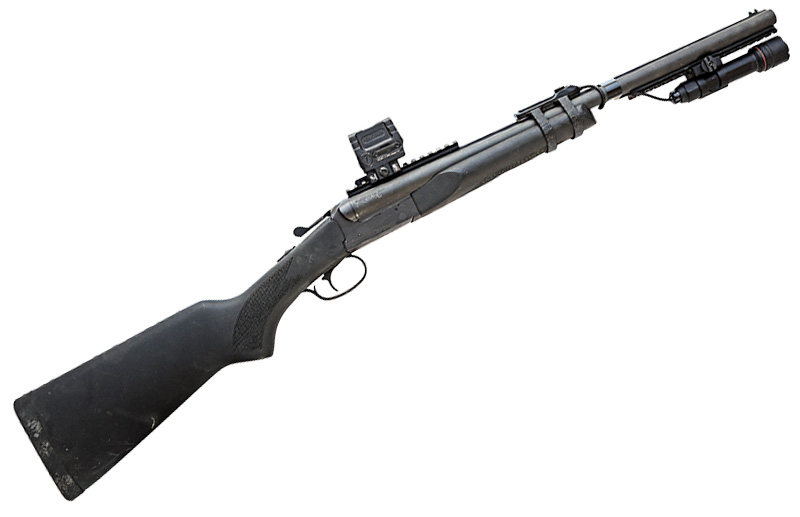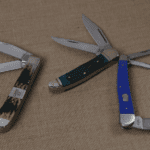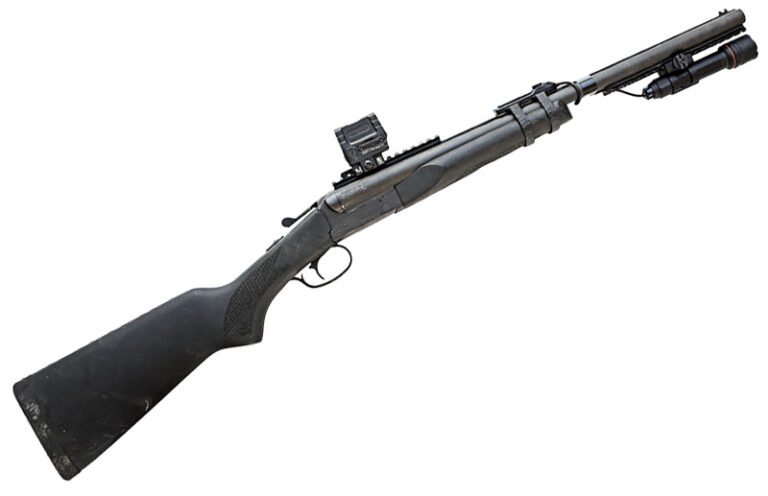
The writer evaluates the Stoeger Double Defense, a double-barrel shotgun that introduces modern features to the classic coach gun.
When I was a young Army Lieutenant graduating Officer Basic Course, one of the instructors shared some advice he had gained during the early days of Operation Iraqi Freedom. Among his battlefield maxims, he said: “If someone needs to be shot, shoot them twice.”
It seems that gunfighters from centuries ago had a similar idea, embodying this notion in the form of the double-barreled shotgun. While various types of double-barreled guns can be found worldwide and throughout history, it is most firmly embedded in American culture. The iconic coach gun of the Western frontier, representing an era when both justice and power—although not always synonymous—emanated from the muzzle of double-barrels loaded with lead shot.
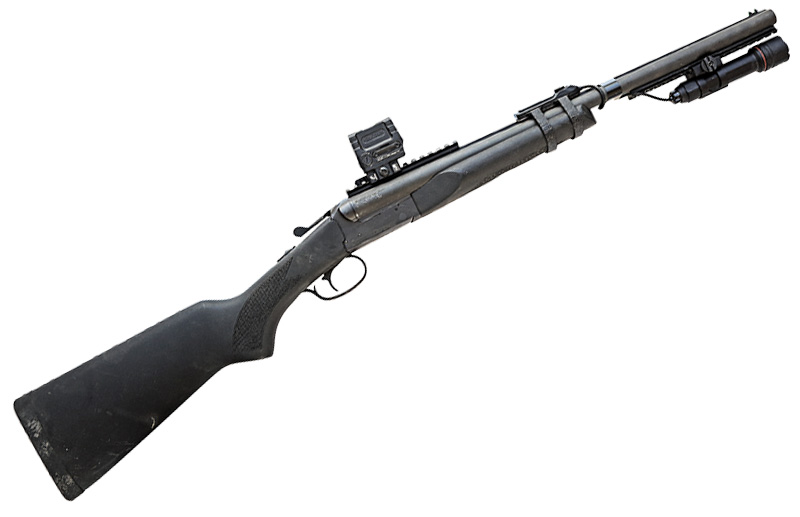
Subsequently, the coach gun has been overshadowed by a multitude of other firearms as the primary choice for defending households and carriages. It could be argued that there are more practical and technologically advanced guns for self-defense purposes. However, despite all the competing advancements, there’s nothing wrong with depending on a double-barreled shotgun, and Stoeger has demonstrated that the template isn’t resistant to being introduced into the 21st century.
Their Double Defense shotguns—offered in both over-under and side-by-side configurations—are not new guns. Nevertheless, they bring some notably modern enhancements to an otherwise timeless firearm. For this reason, we believed this hidden gem deserved a closer examination.
Traditional Features with Modern Updates
The format of the Stoeger itself remains unchanged from the traditional double guns. Our test gun is of the side-by-side variety and is set up exactly as expected. It features two 20-inch smoothbore barrels, 2-¾ inch chambers, and fixed improved-cylinder chokes operated by a single trigger. The safety is a tang-mounted slider switch that resets every time the action is closed. Both versions of the Double Defense are available in 12- or 20-gauge.
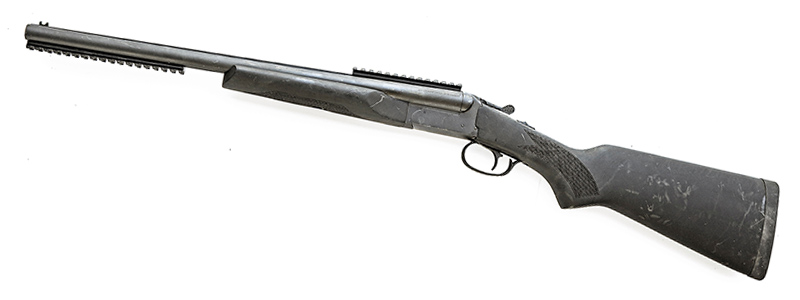
We opted for the more compact 20-gauge for a couple of reasons. First, we believe that 20-gauge is often overlooked as a home defense option. It offers significantly less recoil than 12-gauge, especially in a locked-breech gun like a double-barrel, and ammunition is generally more readily available and less susceptible to supply shortages. There are some drawbacks specific to using this gauge for defense, which we will discuss later. Additionally, the 20-gauge Double Defense is remarkably maneuverable at only 6.4 pounds, with most of that weight stemming from the black-finished walnut furniture, balancing the gun toward the shoulder rather than the muzzle.
From there, Stoeger proceeded to modernize this Wild West icon. They replaced the bead front sight with a bright green fiber optic, ported both barrels similarly to custom shops like Vang Comp, and added not one but two sections of Picatinny rail. One runs along the top just in front of the action, and a second one underneath near the muzzle—presumably for an optic and weapon light, respectively. Both are detachable if not needed.
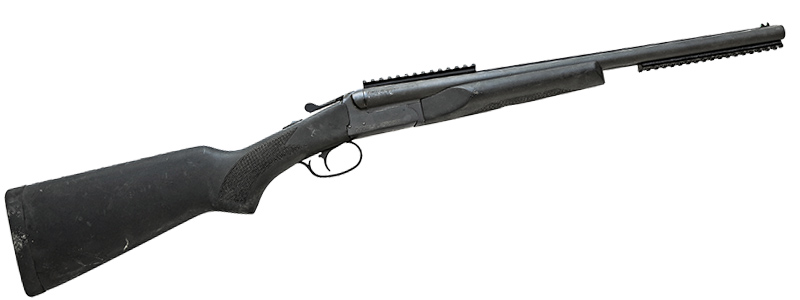
After testing the Double Defense in its stock configuration, we decided to equip it with suitable accessories. For sighting, we added a Holosun AEMS CORE red dot with an American Defense Manufacturing low mount. The AEMS CORE features a simplified version of the more expensive AEMS, lacking the multi-reticle system and solar failsafe cell of the standard AEMS, but retaining the same large window and durable aluminum housing. The bright, precise 2 MOA dot of the CORE serves as an excellent electronic replacement for the bead or fiber optic front sight.
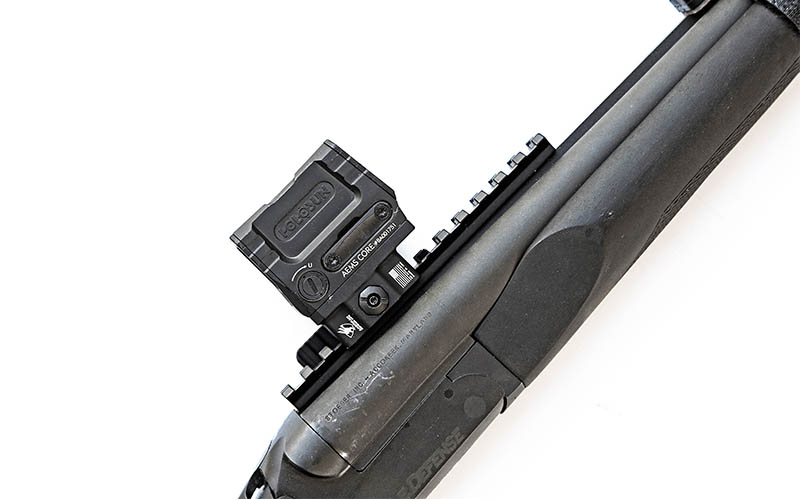
For lighting, we attached a Crimson Trace CWL-202. This weapon light is powered by a 2-cell, CR123 battery, generating 900 lumens. It comes with both M-LOK and Picatinny rail mounts and two tail caps—one for clicky push button activation, the other with a tape switch. The tape switch includes a hook-and-loop strap on the wire for securing it, but we further secured it on the gun with additional tape turns. The reflector produces a wide beam, making it an ideal choice for shotgun use in confined spaces.
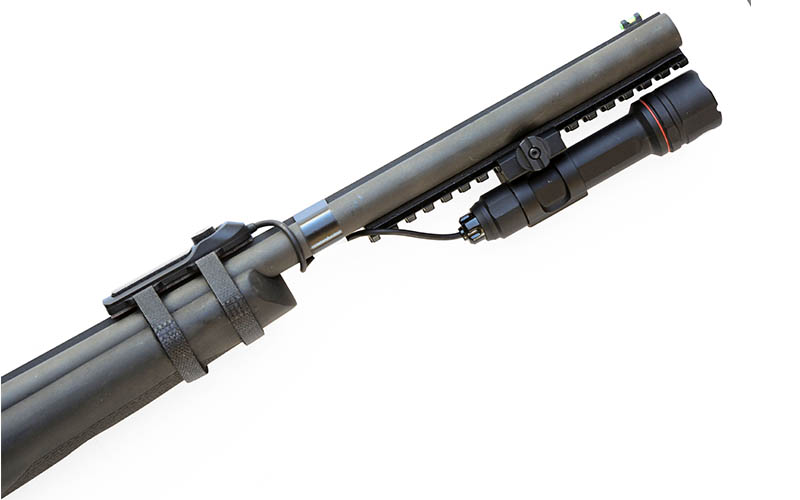
Choosing Ammunition
Prior to delving into the specific performance of the Double Defense on the firing range, we sought expert advice on these guns and also shopped for defensive ammunition. Matt Haught of SymTac consulting provided valuable insight. Haught and his father, Rob, are arguably two of the foremost subject matter experts in the industry on the practical usage of the self-defense shotgun. In terms of load selection, Haught expressed his opinion:
20-gauge is generally not ideal for home defense loads. I have been searching for good buckshot for a long time. Most of what I have come across is either #4 or #3 buck, and I consider both to be slightly small to be truly effective (they typically don’t meet FBI criteria in gel through four-layer denim, for instance, or if they do, it’s only at very close ranges). Currently, I lean towards some Rio 9-pellet #1 buck for my own use if necessary. It is sufficient for close-range distances, but I wouldn’t rely on it for longer ranges. I recently acquired some Winchester Defender #3 buck loads but have yet to test them to see if the plated pellets increase penetration sufficiently, or if the buffering and plating help tighten patterns to acceptable levels. I also have some S&B #2 buck loads in storage that need testing.
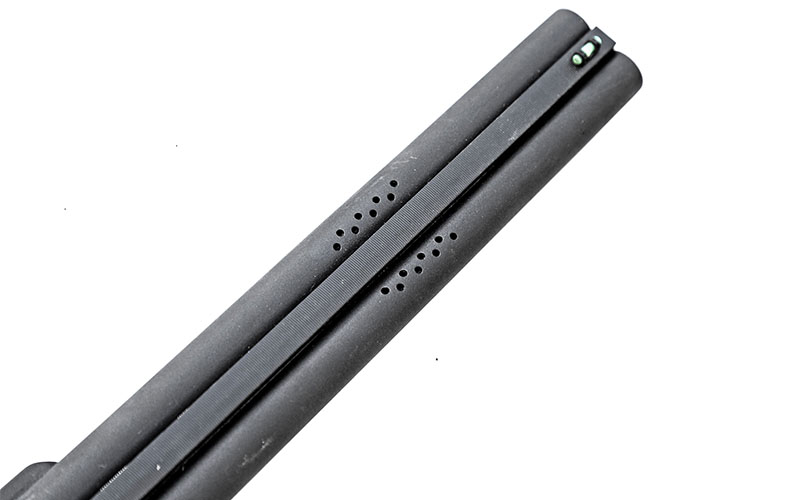
Regrettably, we only tested two loads with the Double Defense. One was a Turkish load, made by Sterling and imported by Global Ordnance, loaded with 7/8-ounce of #8 shot, and the other a defense load from Barnes Defense, with 17 pellets of #3 Buck, approximately .25-caliber pellets. The box claimed a “33 percent reduction in recoil” with a muzzle velocity of 1,140 fps. We started with the Barnes load, which we patterned at 5, 10, and 15 yards. At 5 yards, we achieved a tight group about 6 inches across with all pellets concentrated in the center. At 10 yards, the group size doubled—still acceptable for hitting a man-sized target. However, at 15 yards, the group expanded to nearly 18 inches across. This aligns with Haught’s assessment of 20-gauge being effective at close range but losing effectiveness at longer distances. Each time we opened the action, the shell rims popped up about a half-inch, allowing for easy removal and reloading.
Subsequently, we tested the Sterling birdshot load. The first two rounds functioned without issue. We reloaded two more, fired them, then encountered difficulty with the brass rims ejecting only a short distance. We
